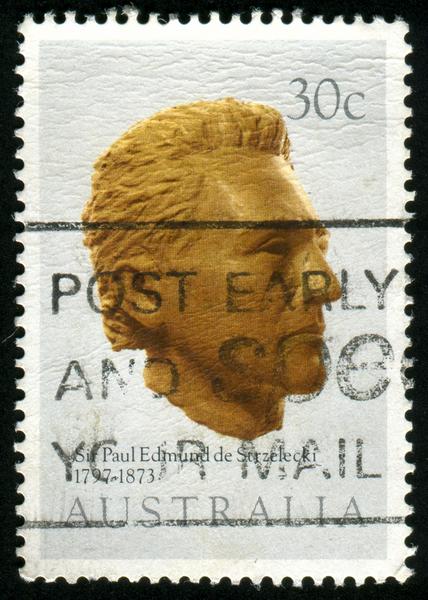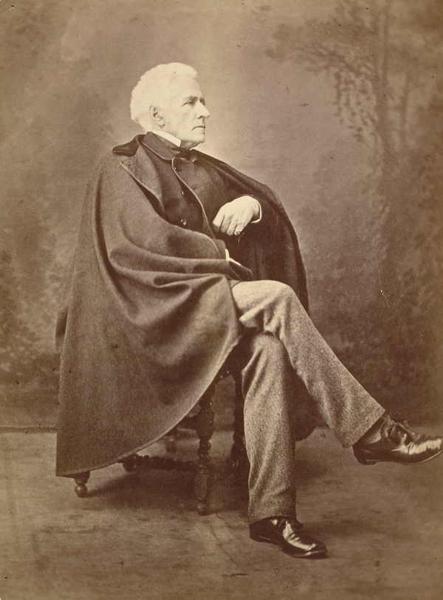Post by Bonobo on Mar 5, 2017 10:14:55 GMT 1
I first learnt about Edmund Strzelecki from my fav book in younger times :

en.wikipedia.org/wiki/Pawe%C5%82_Strzelecki
The legend says that he started travelling after an unsuccessful attempt to marry certain lady.
Sir Paweł Edmund Strzelecki KCMG CB FRS FRGS (Polish pronunciation: [ˈpavɛw ˈɛdmunt stʂɛˈlɛt͡skʲi]; 24 June 1797 – 6 October 1873), also known as Paul Edmund de Strzelecki, was a Polish[1][2] explorer and geologist[3] who in 1845 also became a British subject.
He arrived at Sydney on 25 April 1839. At the request of the Governor of New South Wales, Sir George Gipps, he made a geological and mineralogical survey of the Gippsland region in present-day eastern Victoria, where he made many discoveries. He discovered gold in 1839, but Gipps feared the effects of gold on the colony and persuaded Strzelecki to keep his discovery secret.
Later in 1839 Strzelecki set out on an expedition into the Australian Alps and explored the Snowy Mountains with James Macarthur, James Riley and two Aboriginal guides: Charlie Tarra and Jackey. In 1840 he climbed the highest peak on mainland Australia and named it Mount Kosciuszko, to honour Tadeusz Kościuszko, one of the national heroes of Poland and a hero of the American Revolutionary War. On Victorian maps (but never on New South Wales maps) the name Mount Kosciusko was erroneously connected to the neighbouring peak, at present known as Mount Townsend[7] and causing later many confusions, including the recent incorrect information on swapping the names of the mountains.[8]
From there Strzelecki made a journey through Gippsland. After passing the La Trobe River it was found necessary to abandon the horses and all the specimens that had been collected, and try to reach Western Port. For 22 days they were on the edge of starvation, and were ultimately saved by the knowledge and hunting ability of their guide Charlie, who caught native animals for them to eat. The party, practically exhausted, arrived at Western Port on 12 May 1840 and reached Melbourne on 28 May.
From 1840 to 1842, based in Launceston, Tasmania (then known as Van Diemen's Land), Strzelecki explored nearly every part of the island, usually on foot with three men and two pack horses. The Lieutenant-Governor, Sir John Franklin, and his wife, Lady Jane,[9] afforded him every help in his scientific endeavours.
Strzelecki left Tasmania on 29 September 1842 by steamer and arrived in Sydney on 2 October. He was collecting specimens in northern New South Wales towards the end of that year, and on 22 April 1843 he left Sydney after having travelled 11,000 kilometres (7,000 miles) through New South Wales, Victoria and Tasmania, examining the geology along the way. He went to England after visiting China, the East Indies and Egypt. In 1845 he published his Physical Description of New South Wales and Van Diemen's Land which was awarded the Gold Medal of the Royal Geographical Society in May 1846.
In 1845 he became a naturalised British subject.



en.wikipedia.org/wiki/Pawe%C5%82_Strzelecki
The legend says that he started travelling after an unsuccessful attempt to marry certain lady.
Sir Paweł Edmund Strzelecki KCMG CB FRS FRGS (Polish pronunciation: [ˈpavɛw ˈɛdmunt stʂɛˈlɛt͡skʲi]; 24 June 1797 – 6 October 1873), also known as Paul Edmund de Strzelecki, was a Polish[1][2] explorer and geologist[3] who in 1845 also became a British subject.
He arrived at Sydney on 25 April 1839. At the request of the Governor of New South Wales, Sir George Gipps, he made a geological and mineralogical survey of the Gippsland region in present-day eastern Victoria, where he made many discoveries. He discovered gold in 1839, but Gipps feared the effects of gold on the colony and persuaded Strzelecki to keep his discovery secret.
Later in 1839 Strzelecki set out on an expedition into the Australian Alps and explored the Snowy Mountains with James Macarthur, James Riley and two Aboriginal guides: Charlie Tarra and Jackey. In 1840 he climbed the highest peak on mainland Australia and named it Mount Kosciuszko, to honour Tadeusz Kościuszko, one of the national heroes of Poland and a hero of the American Revolutionary War. On Victorian maps (but never on New South Wales maps) the name Mount Kosciusko was erroneously connected to the neighbouring peak, at present known as Mount Townsend[7] and causing later many confusions, including the recent incorrect information on swapping the names of the mountains.[8]
From there Strzelecki made a journey through Gippsland. After passing the La Trobe River it was found necessary to abandon the horses and all the specimens that had been collected, and try to reach Western Port. For 22 days they were on the edge of starvation, and were ultimately saved by the knowledge and hunting ability of their guide Charlie, who caught native animals for them to eat. The party, practically exhausted, arrived at Western Port on 12 May 1840 and reached Melbourne on 28 May.
From 1840 to 1842, based in Launceston, Tasmania (then known as Van Diemen's Land), Strzelecki explored nearly every part of the island, usually on foot with three men and two pack horses. The Lieutenant-Governor, Sir John Franklin, and his wife, Lady Jane,[9] afforded him every help in his scientific endeavours.
Strzelecki left Tasmania on 29 September 1842 by steamer and arrived in Sydney on 2 October. He was collecting specimens in northern New South Wales towards the end of that year, and on 22 April 1843 he left Sydney after having travelled 11,000 kilometres (7,000 miles) through New South Wales, Victoria and Tasmania, examining the geology along the way. He went to England after visiting China, the East Indies and Egypt. In 1845 he published his Physical Description of New South Wales and Van Diemen's Land which was awarded the Gold Medal of the Royal Geographical Society in May 1846.
In 1845 he became a naturalised British subject.







